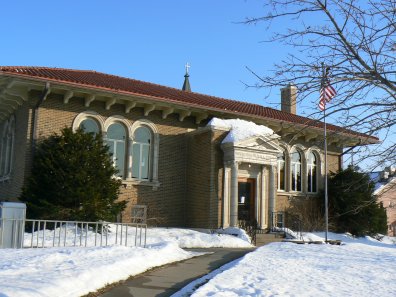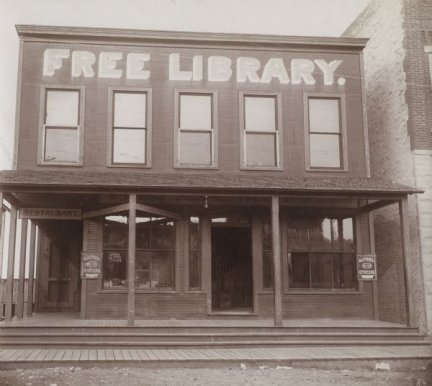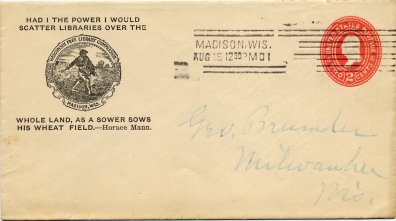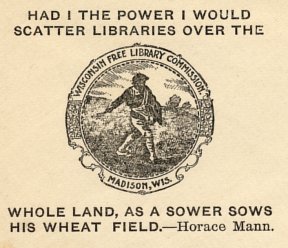


On a recent trip I stopped in at both the Southwest Wisconsin Library System and the Dwight T. Parker Public Library in Fennimore, Wisconsin. The Public Library is housed in a building which is on the National Register of Historic Places . It was constructed in 1923 and was designed by the architectural firm of Claude & Starck which designed many of Wisconsin’s public libraries. The style of the building is impressive and is described as follows by the Wisconsin Historical Society: “The structure incorporates Mediterranean and NeoClassical elements into a rectangular mass reminiscent of their Prairie School designs. Large brackets support the wide overhanging eaves of the clay tile roof. A central NeoClassical entrance projects from the front façade. Terracotta details such as a pediment, colonettes, arches, and bracketed sills accent the simple brick motif.” The building was built through the generosity of Dwight T. Parker, a prominent local leader and banker. Parker later left a trust fund to help fund the library also. It is unusual that the library which is 87 years old does not have an addition. If you’re ever passing through Fennimore it is well worth a stop. While at the SWLS I was able to pick up a few “no longer in use” library artifacts, and was able to witness the demise of their card catalog from which I salvage a few catalog cards. The SWLS celebrated its 50th anniversary last year.






 A postcard mailed in March of 1911 to announce the American Library Association Conference in Pasadena, California provides a link to one of Wisconsin’s longtime special librarians. When Clarence S. Hean received this postcard he had been the Agricultural College Librarian and the University of Wisconsin for three years. He didn’t complete his service in that position until June, 1952, a span of 44 years. The library he directed is now the
A postcard mailed in March of 1911 to announce the American Library Association Conference in Pasadena, California provides a link to one of Wisconsin’s longtime special librarians. When Clarence S. Hean received this postcard he had been the Agricultural College Librarian and the University of Wisconsin for three years. He didn’t complete his service in that position until June, 1952, a span of 44 years. The library he directed is now the  In 1897 the
In 1897 the 
